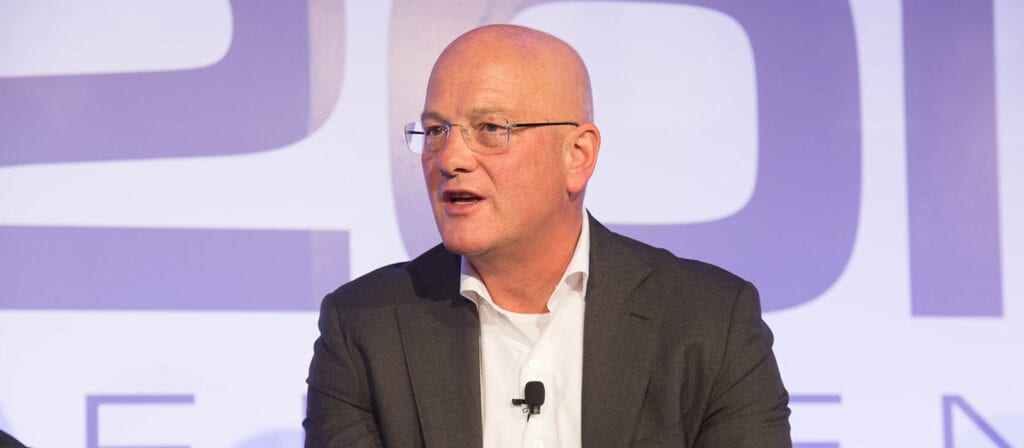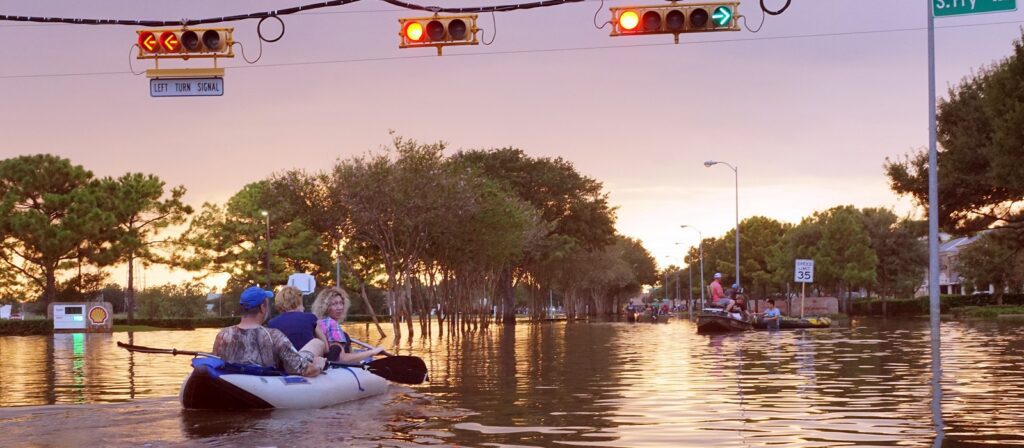Ben Telfer:
Hello everyone, and welcome to today’s ICMIF webinar, “Funding innovation for a sustainable and future-proof society”. Today we will hear from ICMIF member, Achmea, based in the Netherlands on how they have launched a fund focused on investing in businesses that support Achmea’s mission to contribute to a healthier, safer and future-proof society. I’m very pleased to introduce today’s speaker, Katharina Maass, who is from Achmea. And Katharina is head of the Achmea Innovation Fund. Katharina, delighted you could join us today and I’m pleased to hand over to you.
Katharina Maass:
Hi. Welcome, everyone. Thank you for the introduction. Yes, so I was asked by the organizers to tell something about Achmea’s Innovation Fund, and I want to give a short intro about the Achmea then focus on our main strategies and main investment focus, then show you some examples of investments we have made, and then also talk you through how we’ve set up the fund and some organizational issues.
So the Achmea Innovation Fund, yeah, there we see the slide, is a corporate venture fund that was launched on the 1st of October 2019 and has an initial investment size of 100 million. And the goal is to provide early stage and growth capital to companies that are active in the business domains of Achmea. And also that includes emerging technologies in FinTech and Insurtech. The aim is to gain access to emerging disruptive and competitive business models to create insights in new technologies, customers and channels, creating financial returns for Achmea. And its investment team works very closely with Achmea’s innovation scouts. These are specialists from all areas in the business that are interested in innovation and do this on the side on a voluntary basis. And their role is to also help us identify relevant trends, innovative business models and technologies, and also to implement innovations within Achmea when we work together with the start-ups that we invest in.
Maybe a very quick background about Achmea for those who don’t know Achmea. Achmea is the number one insurance company in the Netherlands serving over 10 million customers in the Dutch market. With about 14,000 employees, it is managing brands such as Centraal Beheer. You might know the advertisements. Interpolis and Zilveren Kruis in the area of health, property and life insurance. It is originally a cooperative entity and it is now majority owned by a foundation. And its socially responsible background continues to influence the company’s mission and strategy. Achmea strive to balance the interests of its customers, partners, employees and shareholders in a responsible way, with special attention to a number of sustainable development goals.
In 2019, total premiums amounted to 20 billion. Achmea is the market leader in the area of property and health in the Netherlands, and it also provides pension related services and it has more than 147 billion of assets under management. Furthermore, via its brands Centraal Beheer and Woonfonds, it is also offering mortgages. And while the Netherlands is Achmea’s home market, it is also active in five other countries.
If we think about the strategy of the Achmea Innovation Fund, we look mainly at technological drivers in our markets. And what we see there, is that investors in the FinTech space look at the impact of technology on a regulated industry. As you know, we and other financial institutions have strong regulation, such as solvency, bank licenses, supervision by various regulators, and we also have legacy IT systems. And surrounding us, we see a trend of technology emerging to give access anywhere via mobile at much lower transaction cost. So mobile access, connected assets, 5G, Internet of Everything are trends we see emerging. And that allows for new channels, new platforms, and new ecosystems to evolve.
And we see also more and more non-financial players offering financial and insurance services. And because of this connectivity, we also see further disintermediation and blurring of value chains emerging. Another big trend is, of course, data analytics and artificial intelligence. Because of the increased connectivity and the increased tracking of data, one can find out more and more about our customers, about products or about objects we insure, and that makes it easier to assess individual risk and ultimately, it will make it more difficult to insure collectively and that is a trend also that newcomers are using to disrupt the value chain of insurance companies.
What is also a trend is that we have new form of data access and customer intelligence. As mentioned before, it’s Internet of Things, intelligent home, drones, satellites, dashcams, wearables, image analysis using artificial intelligence, speech analysis, social media, which drives the engine of data analytics and artificial intelligence. We see new players combining these elements to new types of business models, and often they are outside of the traditional value chain and develop independently of insurance companies and financial services companies also because incumbents are so regulated and burdened also by IT legacy systems.
We do see opportunities, for instance, also in the area of prevention services, access to data, new forms of customer assets, new types of assets and risk and tailored insurance and finance. So we see opportunities that are moving really away from the traditional model, and also stronger focus on ecosystems.
The strategy of Achmea is to see where we can play a role in these ecosystems. And that is at the same time driven by our impact ambition. So we have good health closer to everyone, which is one of our focus areas in healthcare. And that means also two things. Preventing health issues, but also monitoring health of people that have long-term issues, but also allowing people when they age to live longer at home or also to receive care outside of hospitals. Ultimately, we are looking to lower the cost for the healthcare system, but also provide better service to people.
Another area of focus is clean, safe and smart mobility. This is because we are such a big insurer of cars. And we see, of course, a lot of disruption that we expect also, now because of different business models, moving from business to consumer to business to consumer. And later on, we will also see the impact more and more of self-driving technology or assisted driving on our insurance business model.
We also have the theme of safe and sustainable home and living environments. This is driven by our insurance business in the home insurance market. And we look at how we can make the living environment safer for people and more sustainable. And that is applicable to those homes, but also to businesses, but also to cities. For our corporate customers, we’re looking at good working environment and employment practices. How can we help companies to manage one of their biggest cost factors which is employees, and support them in being good employers?
Then we also have a financial service business. I mentioned we are servicing pension funds, we have an asset manager, but we also have a bank. And our mission is to provide financial and other solutions for today, tomorrow and beyond.
And the last theme is climate, and that’s a overarching theme. We believe that this is the single most important issue that we as a society face at the moment. We have, of course, a pandemic, but climate change is long-term and medium-term, the bigger issue. And also for insurance companies, this is a very big issue both on the asset management side but also on the potential damages side and insurability. And we want to help our customers and also help Achmea to have a positive impact in terms of climate.
And so we’re looking at also supporting technologies specifically Insuretech, to make processes more efficient with regard to claim settlement, risk modeling and risk scanning. But we’re also looking at new ways of distribution of insurances. And we also look at FinTech solutions that offer customers more overview, insight and control to build and maintain financial assets. The three sustainable development goals that Achmea has chosen as key drivers are good health and well-being. Again, as the largest health insurance company in the Netherlands, this is a very important aspect for us, sustainable cities and communities and climate action.
As I mentioned already, because value chains are changing, we are investing in broader ecosystems than just insurance companies. And I want to show you some examples of that. And one example is an investment in mobility. The name is yet to be disclosed. Its electric vehicles as a service company. And what we see is that with the sharing economy and distribution of insurance products moving from B2C to B2B2C, there is new business models emerging rather than ownership. And one of those is Cars-as-a-Service, and that’s a solution actually in between car rental and car leasing, because these are subscription models where you can subscribe to a car on a monthly basis and you can either finish your subscription on a three monthly basis, typically. So much shorter term than private lease. That really lowers the barrier to consider a car, because especially younger people, they don’t know yet where they will be in five years and what kind of life they want to lead and what kind of car they need. So this allows them to try out with a low barrier new car.
At the same time, we see electric mobility is on the rise. And that is something we want to support from Achmea, because it allows your society to achieve climate goals that were agreed at the Paris Climate Agreement. And the flexibility of Car-as-a-Service and attractive rates for electric vehicles allows further to lower the barrier to try personal electric transport. We have taken a minority share in this company, and we are planning to provide both insurance cover for these models, but also service because we have surrounding services. This investment allows Achmea to increase its share in the insurance of electric vehicles tap into a growing market. It can also land from the connectivity solution this Cars-as-a-Service provider has, because this company offers a complete digital customer journey via apps. So all things are traceable, for instance, repairs, kilometers, booking, location and telematica.
The company further focuses on younger generations and makes EVs accessible to everyone. And on the right side you see that actually 36% of millennials find hybrid or electric vehicles the most appealing. So, this is really a generation that is attracted by offers like this. The strategic focus area is clean, smart and safe mobility and climate, and the customer need and growth sharing economy and greater flexibility that are growing trends and reluctance to try electric cars can be overcome by this business model. Achmea and has a good positioning in mobility servicing ecosystem and repair services and so on. And our source of value is embedded insurance which is a growing area, but also service related revenues. The disruptive aspect of this company is that personal mobility is likely to be disrupted both by the sharing economy but also self-driving technology, and our right to win, we believe our position in the ecosystem and strong market position in the Netherlands.
The next example, I want to talk you through an example of an investment we did in the area of climate, which is Land Life Company. I start with a story again. Land Life is a technology-driven reforestation company that plants trees at scale. By planting trees where they’re most needed, Land Life Company revitalizes key ecosystems, improves biodiversity and creates social and economic benefits for local communities. Land Life Company’s business model focuses on offsetting CO2 emissions of large companies through reforestation. And that is especially important because many companies don’t have an alternative yet to compensate for their CO2 emissions. And in this way, they can become much faster climate-neutral and also contribute to solving the problem we have with rising CO2 emissions. Land Life uses innovative technical solutions such as drones, big data, also satellites, but also planting technology and develops partnerships with local stakeholders. The company operates mainly in Europe, the US and Australia.
The strategic rationale was that both by working with Land Life Company, Achmea wants to achieve its own climate objectives, but also help customers to reduce their CO2 emissions until true carbon neutrality can be achieved. Related to this, Achmea wants to develop new customer propositions so that it can respond to the rising demand of CO2 offsets, driven by the growing desire of companies and individuals to do more for the climate but also driven by rising CO2 emission cost.
We’re expecting regulatory change in the EU very soon. And as you can see, I have the CO2 price until April 2021. And it rose from maybe €5 per ton CO2 emitted to more than 14 April. And I think it’s around €50 per ton CO2 emitted. It’s a big risk area, and it can be potentially for companies, a big cost factor if the new CO2 pricing regulations will hit the different jurisdictions. So the strategic focus area is climate and solutions for companies. Customer need and growth is companies are looking for ways to compensate for CO2 emissions to become carbon neutral. Achmea assets are that we advising and servicing company in the area of risk management. And that’s one of the rising CO2 costs a big risk. Source of value is really to enable us to offer a wider range of products, and disruptive aspect is the transition to a CO2 neutral economy is the biggest challenge of our time. And it will change a lot of our clients, businesses and economy in general. Our right to win is our risk management expertise, but also our client servicing ability to service large customers.
Last example I want to talk to you today is Roamler. And Roamler is a platform for localized contractors. As I said, value chains are blurring. And we really, as Achmea, want to offer broader services to our individual clients. People don’t want to often just buy another insurance product, but actually, they want what they need. And if your rain pipe is broken, your one worry is how much it’s going to cost to repair it, but also one worry will be how you’re going to repair it.
So Roamler is a platform offering crowdsourcing services of localized contractors to large companies. The company is active in the areas of technology, installation, retail and healthcare. So Achmea can actually, on a flexible basis, ask Roamler to find local contractors to solve problems of our customers, services are quality controlled due to standard protocols and evidence. So people that repair something need to take pictures that capture the times, of course. And this is analyzed by artificial intelligence to also ensure quality control.
The strategic rationale is Roamler is now a partner for Klushulp, and that’s a service provider of Achmea in the area of home living environment and home insurance. Furthermore, we’re talking about possibilities to offer services in the areas of health care at home. In this way, Achmea can offer new services to clients in a cost-efficient way and increase customer satisfaction.
So this falls into the area of safe and sustainable home and living environments. The underlying customer need is that customers do not only need payment for damages, but also solutions for their underlying problems. We have, of course, customer access already and we have leads. The source of value is servicing revenue but also higher customer satisfaction. And disruptive aspect is the technology to connect to localized service providers. This is all done by mobile technology and internet tools. And that allows Achmea to become an ecosystem player in ecosystems that are interesting to Achmea. Our right to win is, we do have a very strong market share in home insurance and other markets and good customer access.
As next point, I wanted to give you a little bit and understanding of how this fits into Achmea and how this has been set up. So the Achmea Innovation Fund forms part of the broader Achmea innovation ecosystem. So we have offerings from incubators, all the way up to partnerships and outright M&A activity. And the Achmea Innovation Fund is filling the intermediate gap between these two solutions. With Innovatie SI, Lab55 and other providers, we have incubators where we work with the intrapreneurs and also internal employees to create our own start-ups and product offerings. And we also have a strong partnership strategy and our M&A team, which look for solutions of ways to work together with other corporates or acquire companies outright.
And in the Middle East, Achmea Innovation Fund, often these companies that we invest in are… It wouldn’t make sense to acquire them outright. They are often servicing more clients and broader customer needs. And then we are activating but also these companies are often still growing and they have no interest to sell to a strategic party. But by working together, we can bring this innovation inside to Achmea and at the same time benefit also from the financial returns of these start-up companies, especially if we help to make them bigger.
Maybe I say briefly something about the governance. The governance of the Achmea Innovation Fund has set up a strong business involvement and extraordinary expertise. So we have a advisory committee that provides a knowledge of the important aspects. For instance, IT finance and risk, but innovation and business, but also external experts in venturing and corporate venturing, but also, we have somebody on the advisory committee who has successfully set up innovation engine for one of the incumbents in the Netherlands, and an academic. And in the advisory committee, we discuss the general strategy of the fund and also we discuss the investment thesis we have in the different domains.
The investment committee focuses on financial performance. We do have also returned requirement for our fund, also because we want to treat premiums responsibly of our customers. The investment committee also looks at strategic fit and potential link with the business and how it can fit within operations and IT.
And we also have a close relationship to the board. Two of our board members are on our directors of the Achmea Innovation Fund, and that is also very important because innovation needs to be driven also by senior management because there is or can be an incumbent natural resistance to innovation.
This is our investment criteria. So what do we offer to ventures? So we provide growth capital as co or lead investor for promising Insuretech and FinTech ideas as well as start-ups with disruptive business models in our key markets. Our investments typically range from €500,000 minimum to about five million in the initial phase. Other potential areas of support to be explored are the following. Achmea as a breakthrough client. Insights and support from experts in insurance and services relating to healthcare, mobility, income protection, pensions, asset management, and more. Access to our customer base of millions of customers and businesses through our 10 world class brands like Centraal Beheer, Interpolis and Zilveren Kruis. And access to Achmea’s international network bringing together business partners to potentially accelerate innovation.
What we are looking for is AIF is focusing on companies that have a clear strategic map with one of our strategic domains. For instance, in health care, mobility, the living environment and home environment as I mentioned earlier, and innovate in the area of customer contact, distribution as mentioned earlier, and that was mentioned earlier, the technologies. We do want to have a clear and working business model, proven product market fit, revenue generating and drift management. We’re focusing on Western Europe, Scandinavia, and Israel.
As a last slide, I also edit our team. So we are four investment professionals that are focusing also on the different domains in turn. So I wanted to maybe open the floor for questions, and look forward to hear your ideas.
Ben Telfer:
Thank you very much, Katharina. We do have a number of questions in, so we’ll get straight to them…
First question for you here, Katharina, you mentioned that the innovation scouts, Achmea, were volunteers. The question just asked how many do you have, what is their sort of background, and what is their role and the process behind them becoming volunteer scouts within the organization?
Katharina Maass:
We have 45 innovation scouts and they are organized along the different domains. And they typically have role in business development or innovation, but also in IT typically, and their role is to help define our investment thesis. So they are our ears and eyes in terms of what the business wants, but they also come across a lot of start-ups and send us opportunities in start-ups. And they say, “Hey, is this an interesting start-up you want to invest in?” We also ask them if we find ourselves, because we also do some proactive search, following our investment thesis to review the start-up said from whom we get pitches in and in this way, you know we get feedback and hear, “Hey, we have done this. We have looked at a similar company or we’ve talked to this company, we are not interested.” And they also help us to find the business link, because one criterium is that we not only invest in companies, but it also has to have the business link with a business sponsor of Achmea, so they can help us to find that business sponsor.
Ben Telfer:
Excellent. Thank you, Katharina. Another question here. Achmea obviously made a decision to set up a separate innovation fund back in 2019. What have been the benefits to have sort of a separate strategy and a separate fund as opposed to just investing in companies?
Katharina Maass:
So I think our fund is more of a corporate venture fund than a venture fund driven by asset management. And the reason to set up a separate team is that we are specialized. And we do have both financial objectives, but also strategic objectives. And by setting up this fund, it allows us to really focus on this. And the reason is probably because there is so much disruption that we see and that the board sees, both in the future but also currently. Does that answer the question?
Ben Telfer:
There’s another question, actually, that I think you did actually cover towards the end, but I’ll give you to sort of elaborate on it. It just says that the focus on Achmea Innovation Funds’ investments is to have a positive impact. Do you measure success of the partnerships in a different way to other strategic investments? And the second part of the question is, do you even consider the ROI as a KPI?
Katharina Maass:
Yes. We do measure the financial returns of the funds. The demand is not that we get a 20% return, it’s lower than that. We don’t think it’s wise to have a loss-making investment. So yes, return on investment is measured. Also, because we believe that if we demand to make returns, we are more likely to identify working business models, and you need business models and the good business case for long-term success. We don’t have specific measurements yet for our impact yet, and maybe that’s something we will look at at a later stage.
Ben Telfer:
Thank you, Katharina, I think you answered that quite fully. When you had a slide at the start about the most relevant technology drivers in the market, where do you see the biggest opportunity in the next two to three years? And then also the biggest opportunity in the next 8 to 10 years?
Katharina Maass:
We look at it both in terms of disruptive potential and of growth opportunity. In insurance in general, we think there was a strong movement of players in the infrastructure around that are not connected to insurance companies, but we’re looking at embedded insurance and different distribution models. So we see a lot of opportunity there, which is both disruptive, because it’s cannibalizing to our direct business. But yeah, often you have to go along with that, that we see in the insurance business.
In healthcare, of course, opportunities with measuring and tracking opportunities but also using data to prevent disease and to be earlier in the digital health area. In home insurance, we see, for instance, emerging trends in cybersecurity, which is a much bigger risk than in the past. So these are some examples, and they really differ by focus areas. And what we do is we do analyze trends in the venture capital market in the start-up market, and where our investment’s going and so on, and trying to read the trends from that. But of course we are not there in all areas yet.
Ben Telfer:
Thank you very much, Katharina. We’ll close the webinar there. Anybody who’s watching this recording and has any questions or concerns, please do get in touch. I really enjoyed your last slide there, Katharina, about looking for other ideas or what’s your idea? So anybody listening to this who would like to know more about Achmea’s Innovation Fund and their innovation ecosystems, please do get in touch because I know Katharina and colleagues at Achmea would be pleased to speak to other ICMIF members from around the world.
So thank you everybody for joining us today. Katharina, thank you again for joining us today and sharing more about the Achmea Innovation Fund. Hope everybody stays safe and healthy and see you again on a future ICMIF webinar. Thank you everyone and have a good day.
Katharina Maass:
Thank you. Bye.
The above text has been produced by machine transcription from the webinar recording. ICMIF has made every effort to ensure that transcriptions are as accurate as possible, however, in some cases some text may be incomplete or inaccurate due to inaudible passages or transcription errors. Listening to or watching the webinar recording will allow you to hear the full text as delivered during the webinar but this is available in English only. Our transcriptions are provided to enable members to select the language of their choosing using the dropdown menu above.





